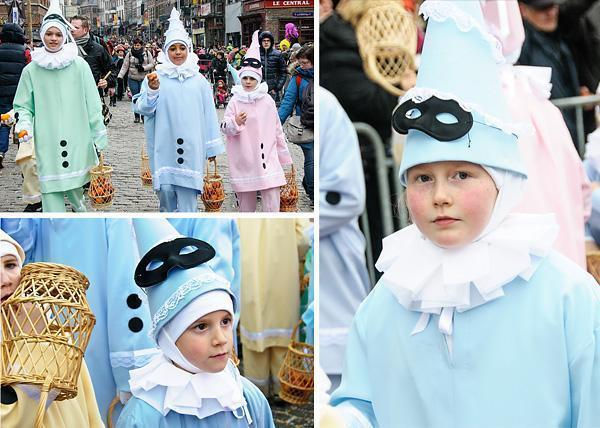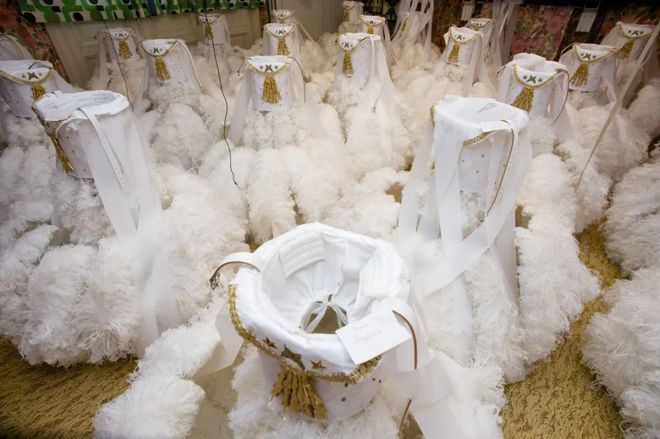
The Carnival of Binche is an annual event in the Belgian town of Binche during the Sunday, Monday, and Tuesday preceding Ash Wednesday.
The Carnival of Binche in Belgium is one of the four famous carnivals in Europe, which is as famous as the Carnival in Nice in France, Cologne in Germany and Venice in Italy. Its reputation has been well-known all over the world, and every year it attracts tourists from all over the world, especially European countries, to attend and watch.
It dates back to around the 14th century and is one of the oldest surviving carnivals in Europe. The original intention of the festival is quite similar to the Chinese Spring Festival. It is to welcome the spring, exorcise demons and ghosts, and pray for a good harvest in the coming year. The Carnival of Binche still retains its original form intact, with makeup parades and drum performances. It was recognized as an oral and intangible cultural heritage of humanity by UNESCO in 2003.
The origins of the festival are uncertain, but the colorful costumes may have been worn in the initial parade, which later became the origin of the modern Gilles costume. In any case, Binche is closely related to the Catholic Easter celebration, and Catholics are supposed to fast for the 40 days leading up to Easter, the first day of which is known as Ash Wednesday.
How to celebrate?
Preparations for the carnival began six weeks ago, with the city in full swing as thousands of people busily crafted ornate costumes, rehearsed drumming performances and prepared masquerade balls.
Street performances and public performances traditionally take place on the Sunday close to Ash Wednesday and include prescribed musical performances, dancing and processions. Large numbers of Binche's inhabitants spend the Sunday directly prior to Ash Wednesday in costume.
When the carnival comes, some people dress up as high-ranking merchants, workers, and farmers, and some dress up as oriental businessmen, Indians, and African hunters. Most of the students dressed up as clowns and wrote various slogans and good wishes on their clothes.


Children wear animal masks, play with colored confetti and plastic foam, and from time to time "attack" the tourists next to them.


The streets and cafes in the town are filled with hordes of make-up revelers.

Gilles' costume
The centrepiece of the carnival's proceedings are clown-like performers known as Gilles. Appearing on Shrove Tuesday (or Mardi Gras), for the most part, the Gilles are distinguished by their vibrant dresses, wax masks and wooden shoes.
Thousands of "Gilles" are dressed in dark orange traditional costumes, with white shawls, white ties, unique wax masks, colorful belts with many copper bells around their waists, and wooden clogs. They hold small brooms made of branches in their left hands, and often carry a wicker basket full of oranges in their right arms, walking in the parade. Their masks are also decorated with a pair of green glasses and curled mustaches.


There are also "Gilles" who wear hats topped with ostrich feathers.

It is said that some of the clothes they wear are passed down from their ancestors, and some are rented. The rent is very expensive, and it costs about 10,000 Belgian francs to rent a set. This kind of clothing is quite special, it is double-layered, and it needs to be filled with straw when put on, making it look bulging. It is clumsy and funny to walk when wearing it, so people call the person who wears this kind of clothes "Gilles".
Gilles clothing can only be worn on this particular day, and it is forbidden to wear it outside the city limits, which is where the saying "Gilles never leaves" comes from. However, not everyone can dress up as Gilles. Three conditions must be met: one is male, the other is Belgian, and the third is a resident of Binche or has lived in Binche for more than five years. Moreover, if a newcomer wants to join this big team, he must be recommended by the older generation of Gilles before he can be approved.


A day as "Gilles"
The "Gilles" man is up at four o'clock in the morning, after putting on make-up and stuffing grass into his clothes, before eating breakfast. After stepping out of the house, each Gilles is accompanied by a dedicated drummer to meet the next Gilles, and Gilles' team is also expanding a little bit in the process.
At noon, the “Gilles” walked into the hall of the city hall to participate in the award ceremony. Those who have dressed up as "Gilles" for 50 consecutive years can be honored to receive the commemorative medal issued by the mayor.
The parade started in the afternoon, and each Gilles held a bamboo basket in his right hand, throwing golden oranges to the cheering crowd. The original intention of this move is to exorcise demons and fight ghosts, and pray for a safe and happy year in the coming year. It is said that whoever is hit by an orange will have no disasters, no difficulties, and good luck throughout the year. The sound of drums and cheers was deafening, like a rain of oranges. (Oranges were considered good luck and since they were a gift from Gilles, it was an insult to throw them back.)

In the evening, musicians play carnival songs under the ambience created by lights, and the dancing shadows of the performers are reflected on the houses and beautiful town hall. The display of lights and fireworks, which illuminate the square in front of the town hall like daylight, is one of the most exciting moments of the carnival and it signifies the end of the festivities.

Comments